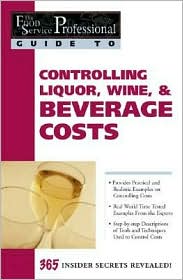Part 1 of 7: Customize a Buying Strategy That Reduces Costs and Controls Inventory

Do you have a purchasing strategy? If not, you need one - NOW! It's never too late. A good buying plan is one of the quickest (and easiest) ways to reduce costs and make sure that your establishment gets the most for its money. Remember, the best place to control costs is in the purchasing department. The plan doesn't have to be complicated - just well thought out and straightforward to implement. A few bulleted points will do. Keep your plan simple and stick to it.
- Use a simple five-prong purchasing strategy.
You want to buy:
- The right product
- Of the right quality
- At the right price
- At the right time
- From the right source
- Think of purchasing as a cycle, not a one-off activity. Purchasing is not just a matter of phoning or e-mailing through another order. You don't want to run out, nor do you want to overstock.
- Purchasing is not a separate activity. What, how and when you buy must always (yes, always!) reflect the overall goals of your establishment. Trends change - so must you, the purchaser.
- Commit your purchasing strategy in writing. Write your plan down on paper; save it on your computer, or any place where it is easily accessible. You never know when other members of staff will need to deputize.
- Step back. Get an overview. Ask yourself whether you're buying on the basis of long-term fixed prices or current market prices. You should be doing both.
Tighten Up Your Purchasing Procedures
Although it's not always the easiest thing to do when you're busy, the introduction of even a few basic "tightening up" procedures can make the purchasing manager's life a whole lot easier - and reduce costs!
- Use your written purchasing strategy as a step-by-step guide. It saves time and money in the long run. Even if you are 100 percent familiar with your establishment's current purchasing procedures, it's all too easy to overlook a crucial link in the procedure and end up wasting time backtracking or duplicating effort.
- Reassess your timing techniques. Timing is crucial. Tune in to the drinks' market price fluctuations. The wine industry in particular is prone to seasonal fluctuations. Also consider the bulk buying of soft drinks in anticipation of the summer season.
- Review your purchasing schedule regularly. Consumption of liquor, wines and beverages fluctuates, from month to month and year to year. A buying pattern that worked well last year may be be way off the mark today. Consider whether it is better to buy daily, weekly, or in the case of certain drinks, monthly.
- Take a fresh look at the layout of your purchase order. Is it accurately laid out, and are your instructions easy to follow? Remove any ambiguity - and remove the unnecessary hassle of processing "returns."
- Check out your vendors. Do they have a good track record for quality and reliability? Are they easy to deal with when things go wrong? Update your vendor contact list regularly, and always remain alert to possible new suppliers. Keep existing vendors on their toes!
This article is an excerpt from the Food Service Professional Guide to Controlling Liquor Wine & Beverage Costs, authored by Elizabeth Godsmark, published by Atlantic Publishing Company. This excerpt has been reprinted with permission of the publisher. To purchase this book go to:


